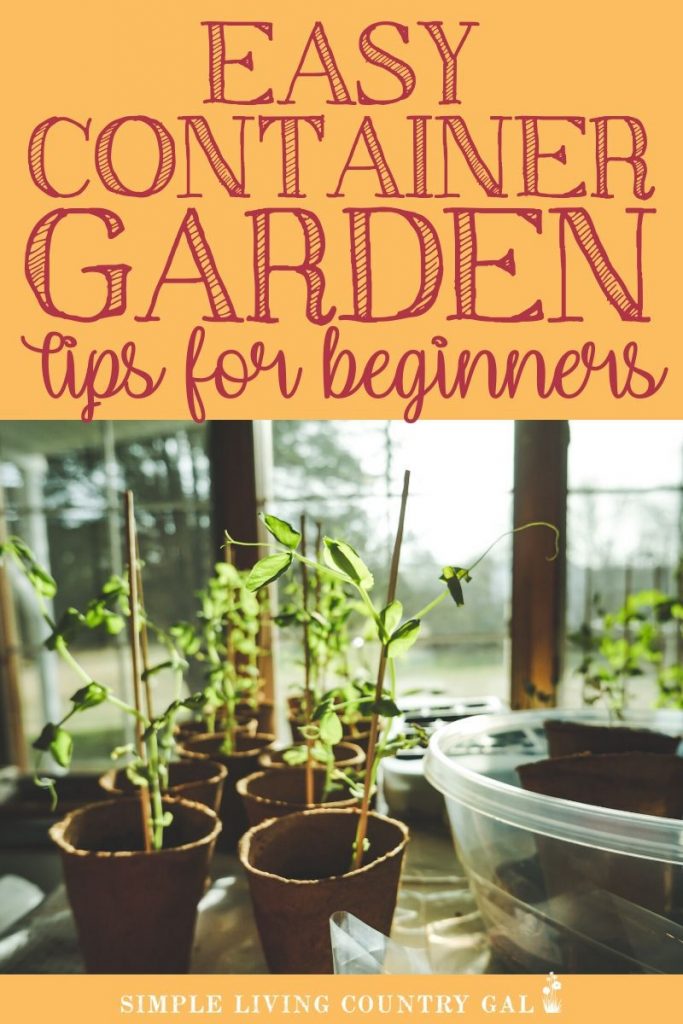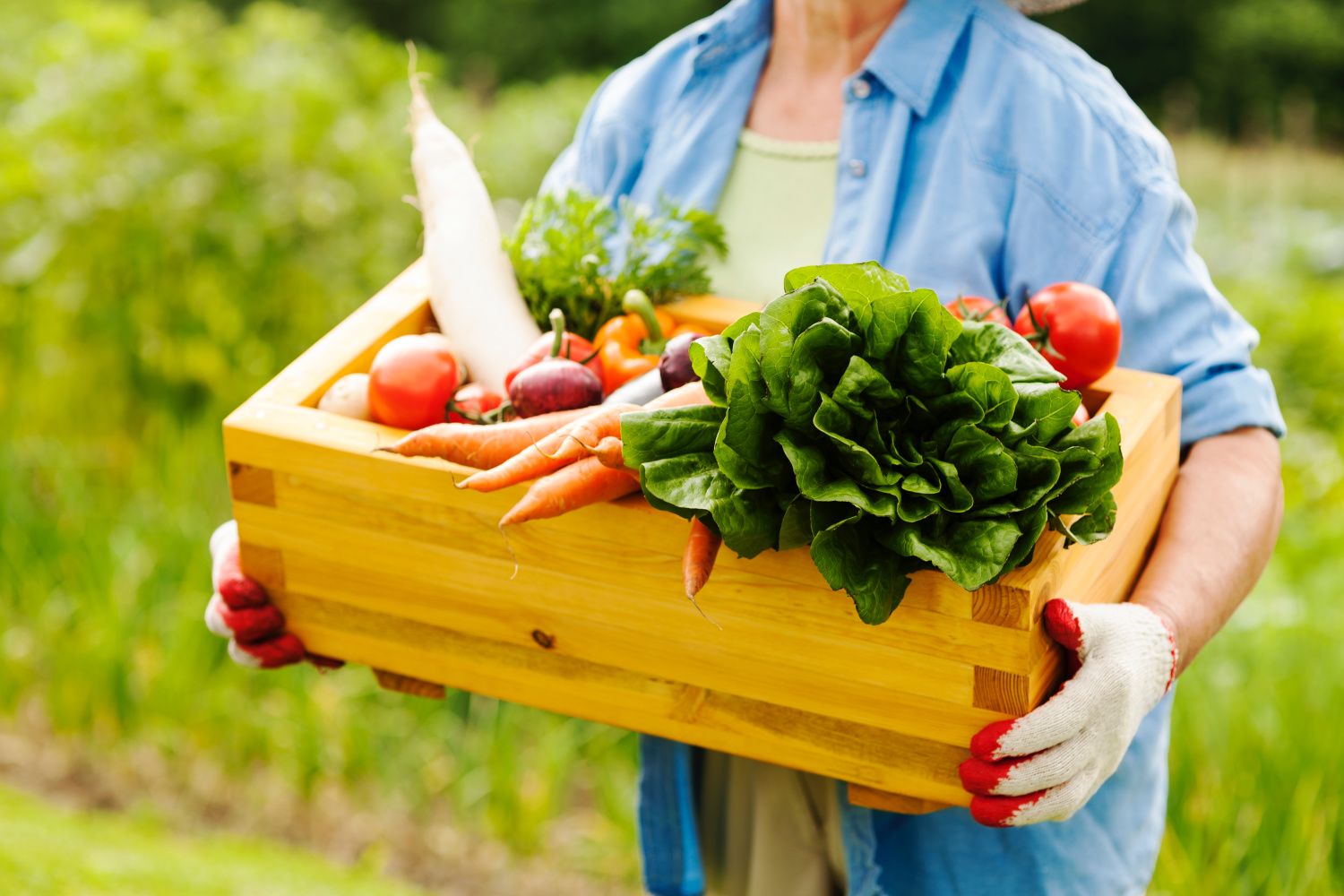Easy Container Gardening Tips for Beginners – an Interview with Melissa K. Norris
This article will walk you through Easy Container Gardening Tips for Beginners so you can find an easier way to grow the vegetables you and your family love.

One of the most enjoyable things for me is to be outside playing in the dirt. The warmth of the sunshine on my shoulders as my hands are deep in the cool ground is pretty much my idea of heaven.
Unfortunately, my old back no longer agrees with me and tends to make a fuss after just a few minutes of garden play. Rather than giving up gardening altogether, I have turned to container gardening instead. Even though I have only been growing my vegetables in containers for just a few summers now, I am totally hooked. Having an entire garden right there outside my kitchen door is just about the best thing I could ask for.
And, I am happy to say, my back completely agrees with me.

The best part is container gardening is really catching on and allowing folks from anywhere and everywhere to finally have a garden of their own. Whether it be on a patio in the suburbs or just a small window sill in a highrise apartment. Having the freedom to grow food is no longer limited to large yards in the country.
A few months ago, I stumbled onto a book called The Family Garden Plan by Melissa Norris.
This book reawakened in me my love of gardening with so many beautiful images that were incredibly inviting to me. Her book is a great addition to any homesteading library because it contains tips from soil to harvest, covering both vegetables and fruits. I can always tell how much I love a book by the highlighted parts inside, and my copy of the Family Garden Plan is not only COVERED in highlights but also post-it note tabs and dogeared pages.
It really is a gem.
A few weeks ago I got the chance to pick Melissa’s brain on gardening and I was able to get her take on growing vegetables in containers. Since this is something still relatively new to me, being able to get a few suggestions from a 5th generation homesteader was not only educational but fun as well.
Easy Container Gardening Tips for Beginners – an Interview with Melissa Norris
Hi, Melissa! I am so excited to talk to you today.
I just loved your new book and found some great and surprising tips tucked inside. I am an old-school girl, and I just love to have books in my home that allow me to find the information I need without having to power up my laptop. I like to call this my homesteading library, and I always encourage my readers to have a well stock library in their homes as well. I know your book will be a great addition because of the wide range of information found inside. Most books focus on just one aspect, usually giving so much more information than the average gardener needs, your book, however, really does touch on it all, making it a great resource to have on hand.
Before we talk plants, I would love to know how long you have been gardening.
Iʼve been gardening on my own for 21 years but grew up gardening with my parents… so almost since birth, lol
I see many photos of your lovely family in your book. Have they always helped you in the garden?
Yes, the garden has always been a family affair. When I grew up, the garden fed us through the winter and was non-negotiable, I take the same approach with my own kids.
Oh, I just love that! Knowing your garden was the main source of your family’s food, was a great way to relay to your family the importance of chipping in. Do you other tips to help encourage children to help in the garden?
Itʼs one of their chores during the summer and fall. If they want to go to a friends, do something special, or have electronic/screen time, they have to put so much time out in the garden. Iʼve also found that what they help grow, they enjoy eating and are willing to try whereas when we didnʼt grow it, they didnʼt even want to taste it.
If weʼre out as a family, instead of just sending each child out to do a task, they tend to do better and enjoy it as family time.
Family time in the garden, what a great way to share your love of growing food with them.
I have been toying around recently with alternative gardening methods. My favorite being container gardening. I do find that some vegetables fair better than others. Do you have any vegetable suggestions for the new gardener when first starting out with a patio garden?
The vegetable really depends on the size of the container youʼre planting in. A 1-gallon pot isnʼt going to allow you to grow root vegetables or plants that have a large root system but they will let you grow spinach, chard, radishes, or green onions.
A 5-gallon container will let you grow 1 tomato or zucchini plant, a couple of peppers, several heads of lettuce, or 6 onions or garlic.
You can grow almost anything in a container but the container will need to be large enough for the root growth. In general, herbs and greens do well on a back patio.
Yes, herbs are something I really want to expand on this season. To me, nothing livens a dish up more than fresh herbs.
What type of soil do you prefer to use with container gardening? Do you feel the need to add more soil as the season progresses?
Correct soil is even more important for a container than a raised bed or inground gardening due to gravitational pressure forces being absent compared to inground. A potting soil mix has the correct balance or you can make your own with equal parts loam soil, sphagnum peat moss, coarse sand, perlite or vermiculite.
I donʼt add more soil in a season but will add a liquid fertilizer every 2 to 3 weeks.
Do you suggest the use of compost even when using a bagged or store-bought soil?
You never go wrong with compost but I add it as a top dressing.
That is interesting, so if you are using your compost as a top dressing do you then skip the mulch?
I donʼt normally mulch with container gardening because Iʼm fitting in more plants in a smaller space and I top dress with compost instead.
READ: HOW TO GROW TOMATOES IN CONTAINERS
Let’s talk about watering, which I know if completely different when using containers. What is a good rule of thumb or measurement guide to follow that will better ensure watering is kept consistent?
In general, containers will require more frequent watering than other beds, but itʼs always better to deep water a few times a week rather than small amounts every day (but in smaller containers in the height of summer youʼll likely be watering daily). I let the top 2 inches of soil dry out in larger containers and then use a gentle spray or mist at a slow trickle until water comes out the drain holes. If the soil has pulled away from the sides of the pot, then the water will likely immediately run out and you should put the pot in a tub of water and let it soak up from the bottom.
I just love repurposing old items, especially in the garden. Are there any tips you can give that may be helpful when growing vegetables in non-traditional containers?
You must have drain holes and adequate room for the roots.
Funny how I never really thought of the drain holes. I always added a layer of stones to the bottom thinking that was enough. That really does explain why my plants did not do quite as well as I thought they should. I will definitely be adding holes to my garden containers this time around.
Do you have any tips for extending the patio garden longer into the growing season?
If you can move your containers easily, take advantage of warmer areas come fall. Southern exposure or near decks, cement or rocks will radiate heat back towards the containers, which can help when cooler weather sets in.
You can use plant frost protection fabric or wrap them overnight to help give you extra weeks of growing in the fall, these usually will buy you about 5 to 10 degrees warmer depending on how well you seal the plants up.
Are there support options for container growing that will work well with peas and beans?
A single pole or metal t-post (provided the vegetable container is deep enough to support it) works well. You can also use a wire tomato cage or place the container near a pole, trellis or fence.
Thank you so much for taking time out of your busy schedule to talk with me. I know your easy container gardening tips are going to be a big help to my readers as well as myself.
There is a bit of a learning curve when switching from an inground garden to an all container one and your suggestions are really going to help this year’s garden be much more successful.
The trick now is to build a patio big enough to hold all the plants this urban gardener would like to grow!
If you want even more gardening tips Melissa’s book is what you need. Her simple gardening guide will walk you through all you need to know to grow a year’s worth of produce at your own home. Something that can now be part of your family’s summer routine. Grab your very own copy of The Family Garden Plan.
Just imagine fresh produce on your pantry shelves in the middle of a cold and windy winter. Just another reason why gardening, especially with these easy container gardening tips, is the best hobby you can have.
READ: THE BEST CONTAINERS FOR A PATIO GARDEN
Melissa is a 5th generation homesteader who lives in Washington state and helps people use modern homesteading to grow, preserve, and cook their own organic food no matter where they live. She and her husband, with their two kids, raise 100% of their own meat and over 60% of their own fruits and vegetables for a year.
You can find her on:
